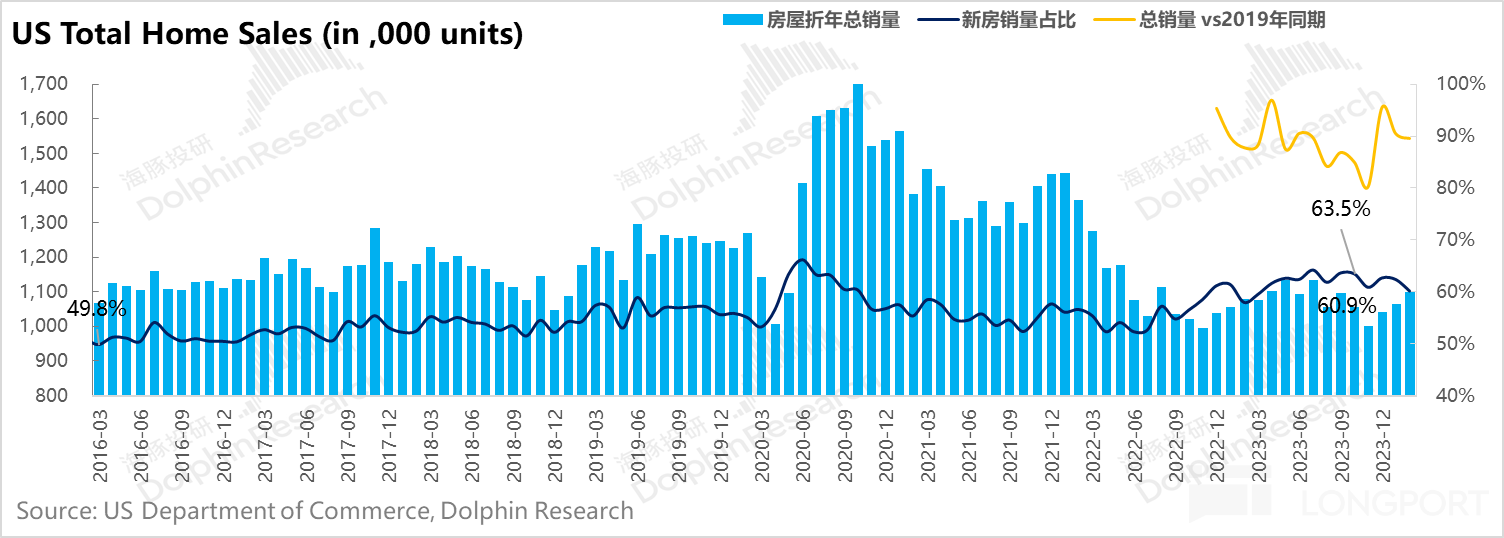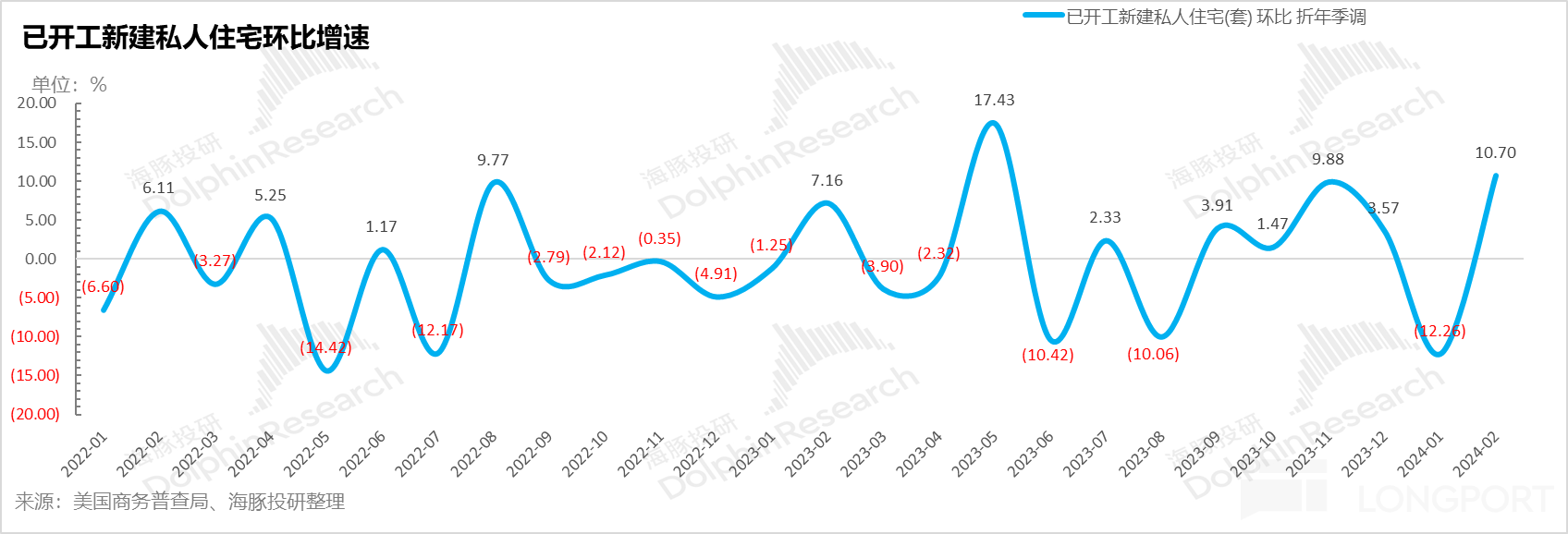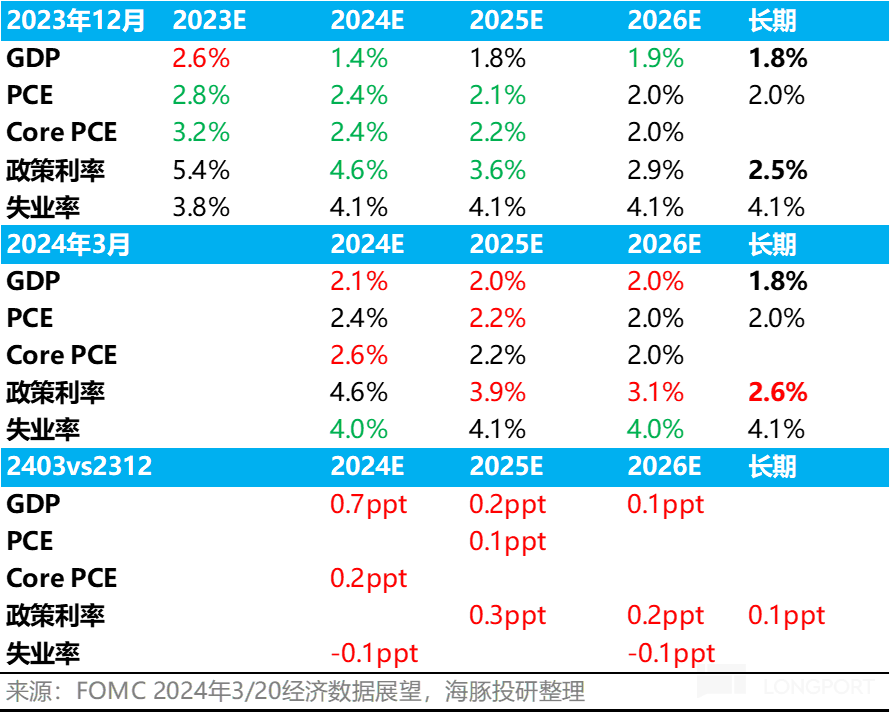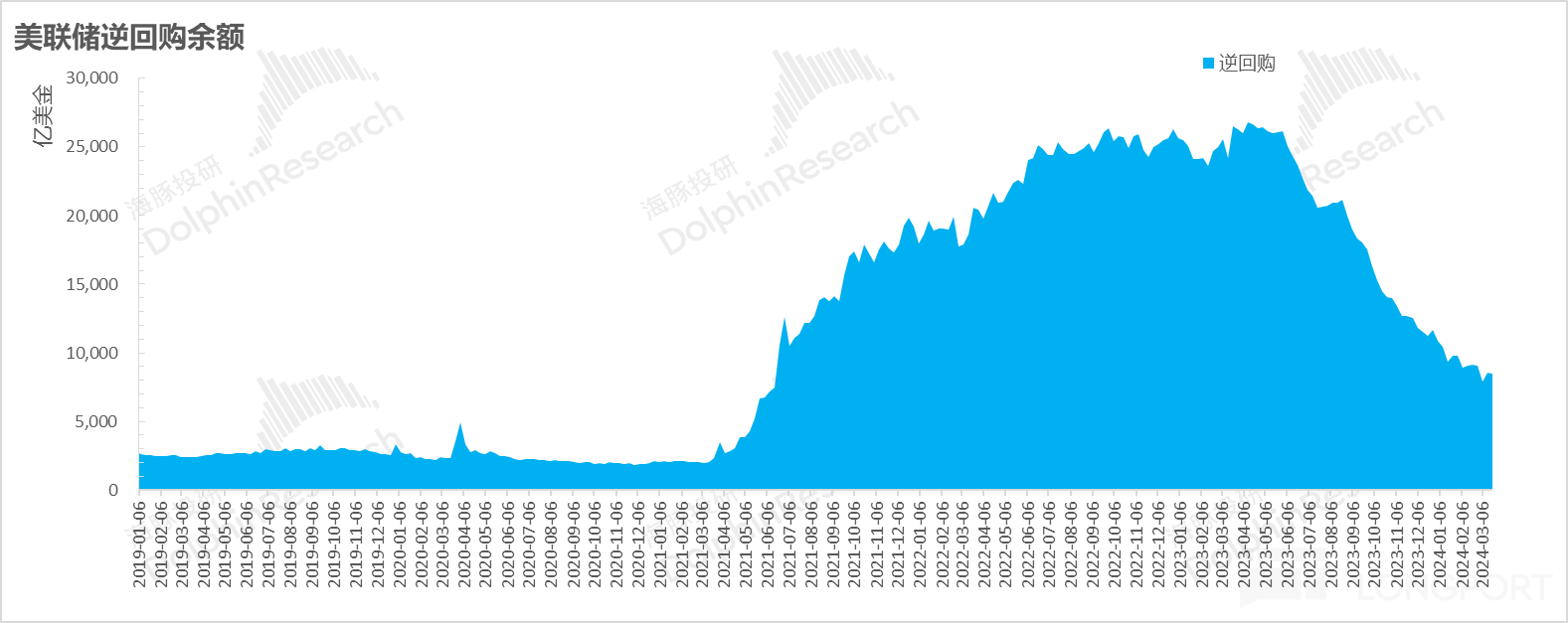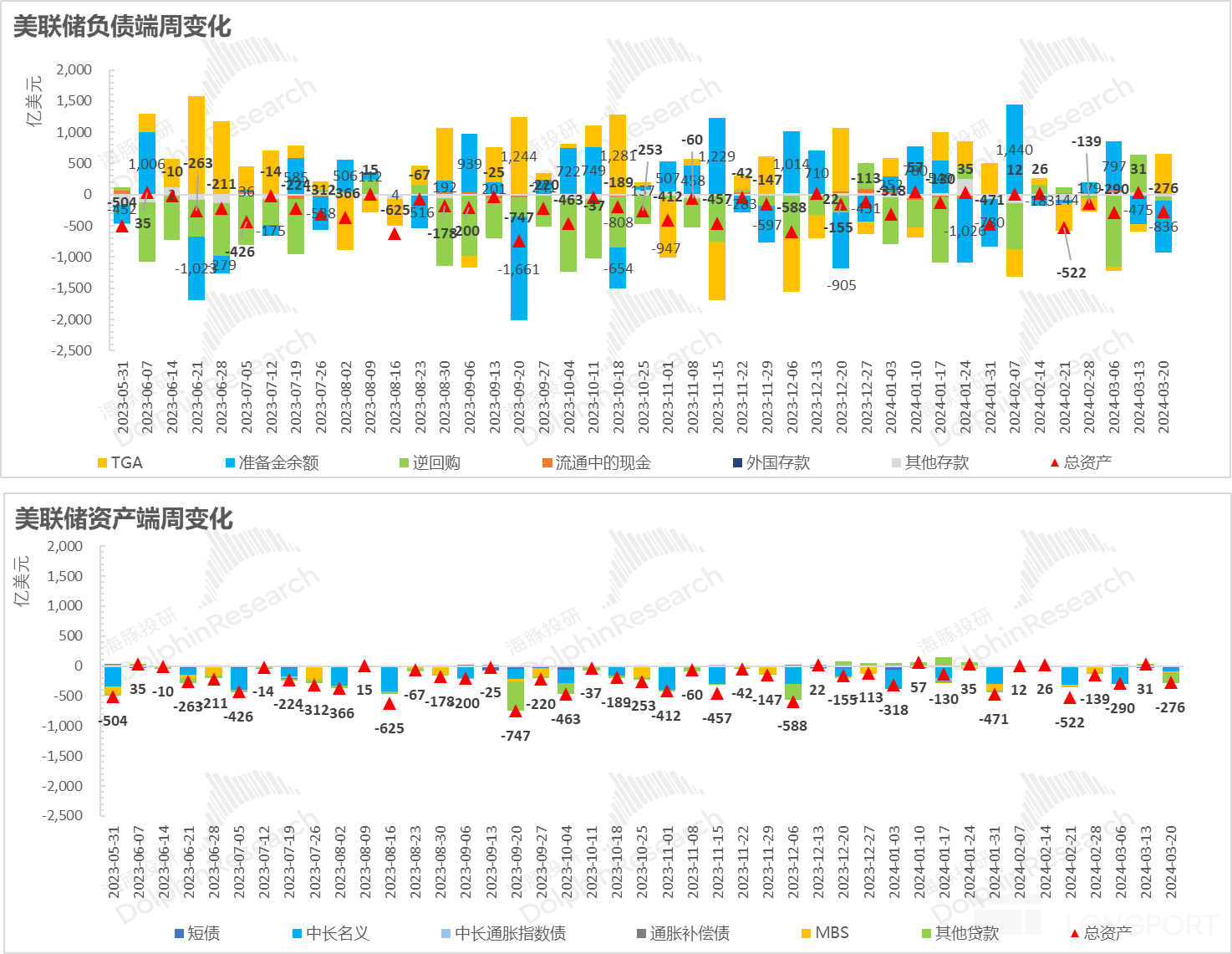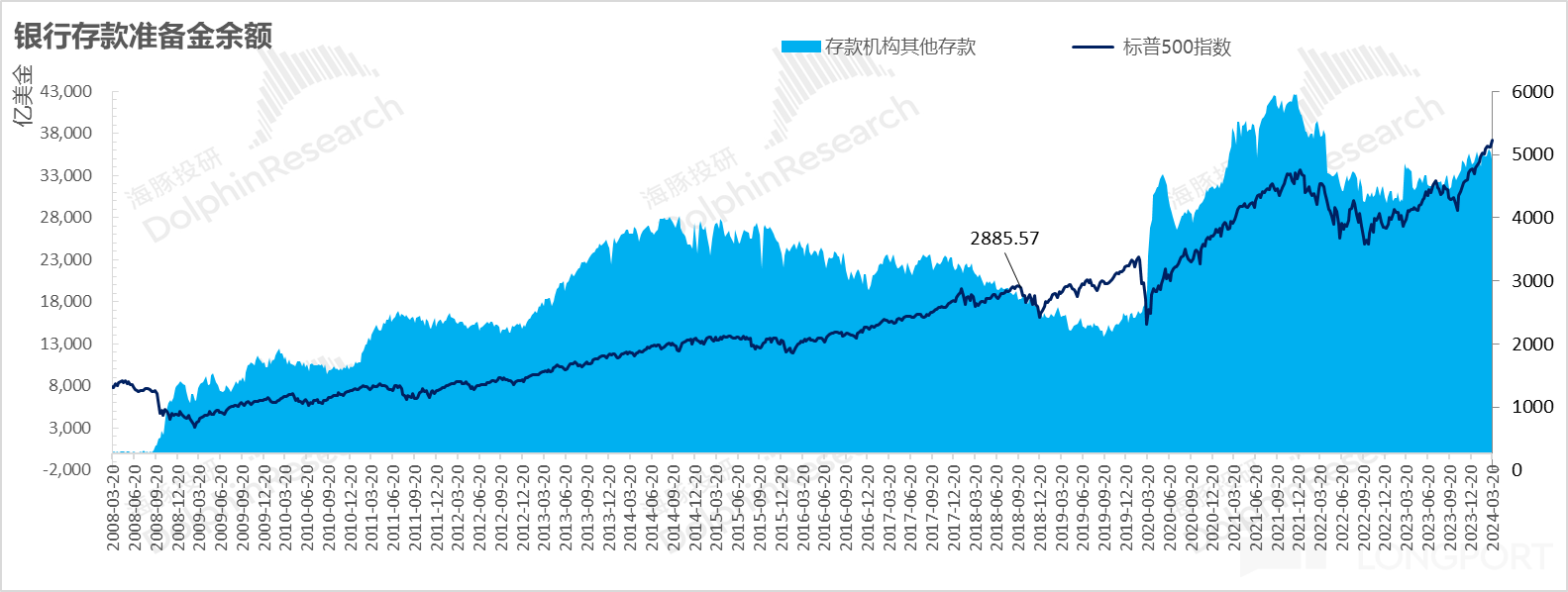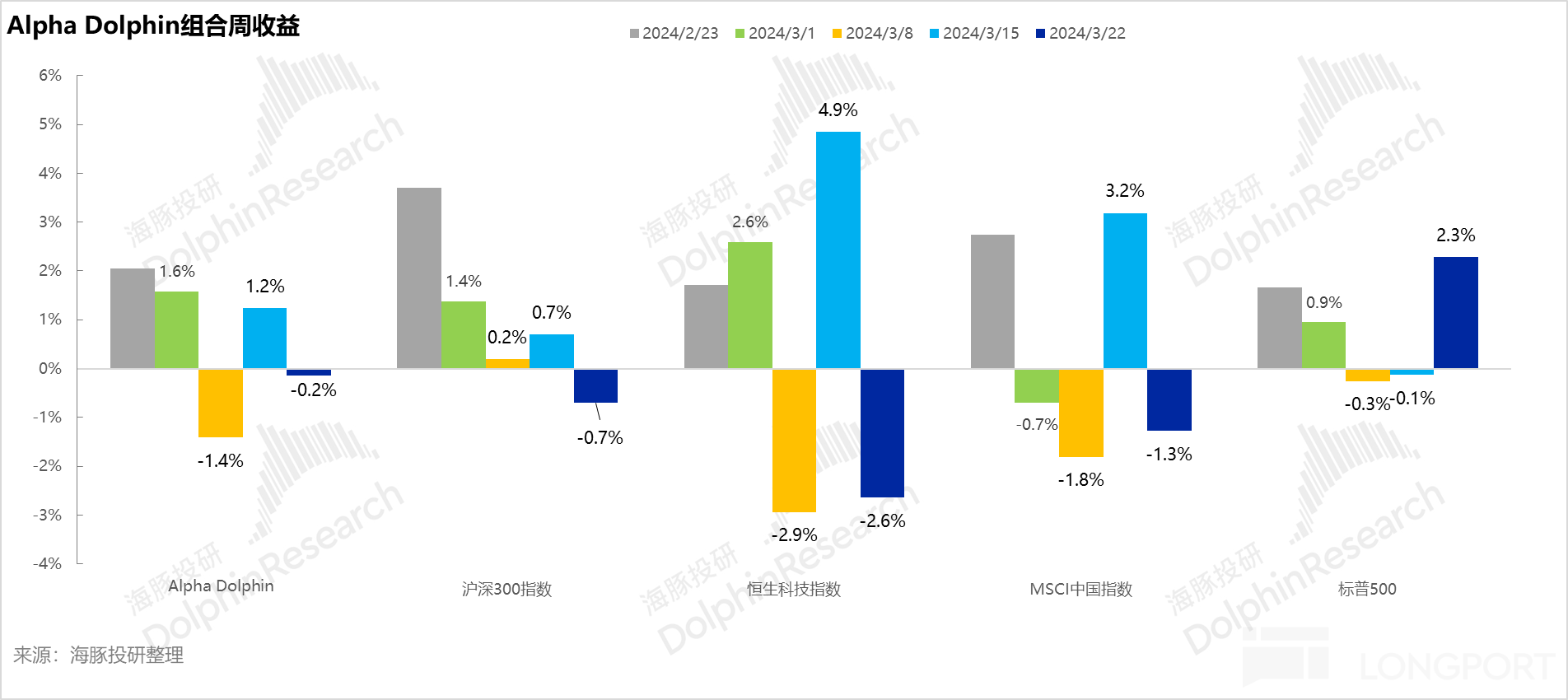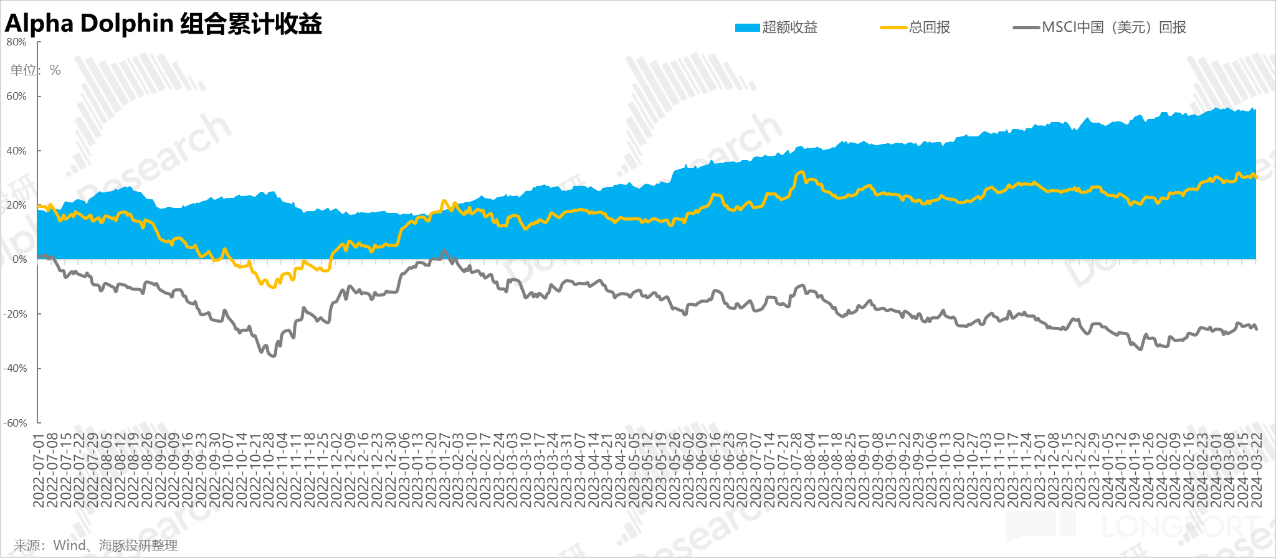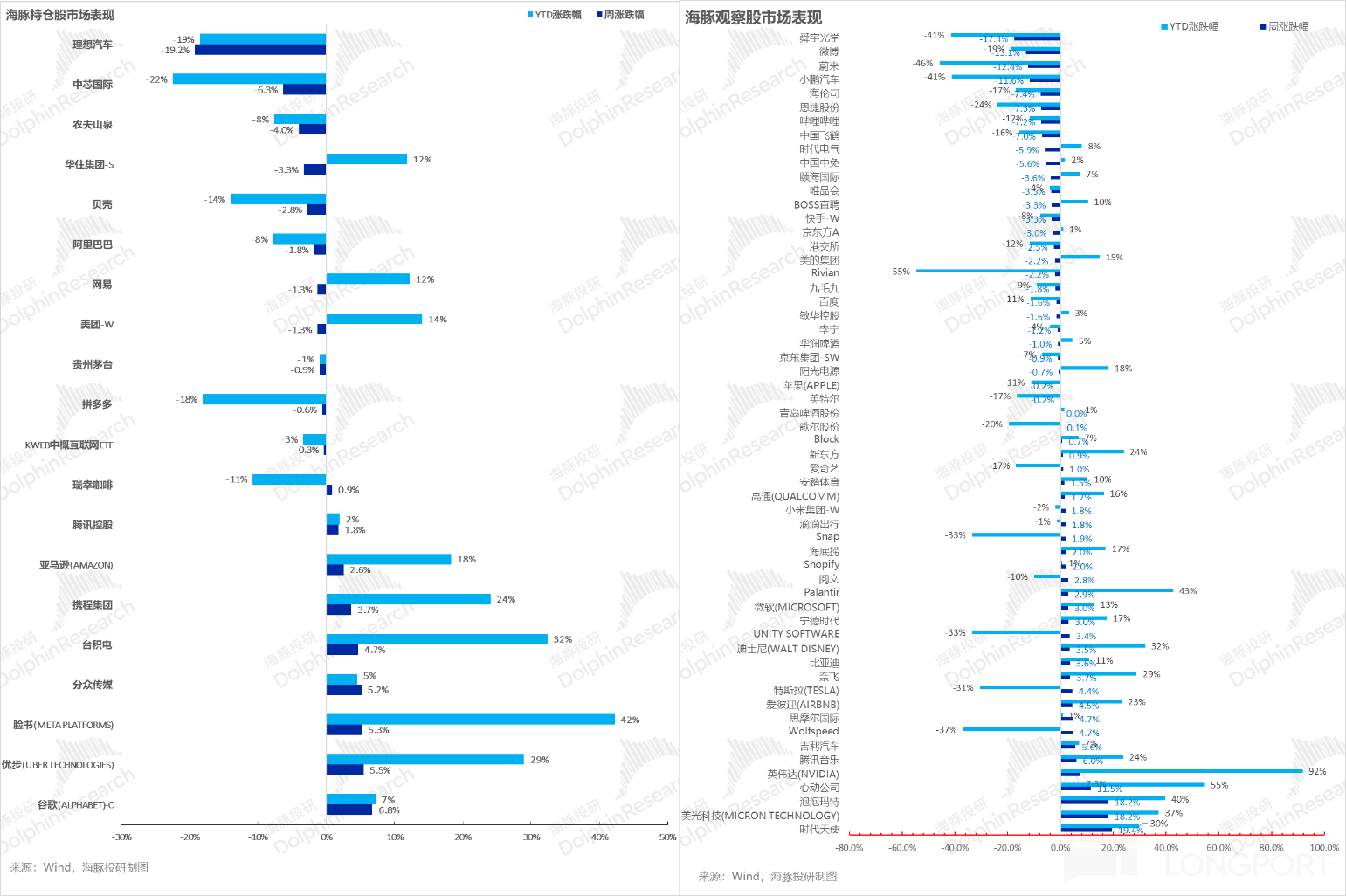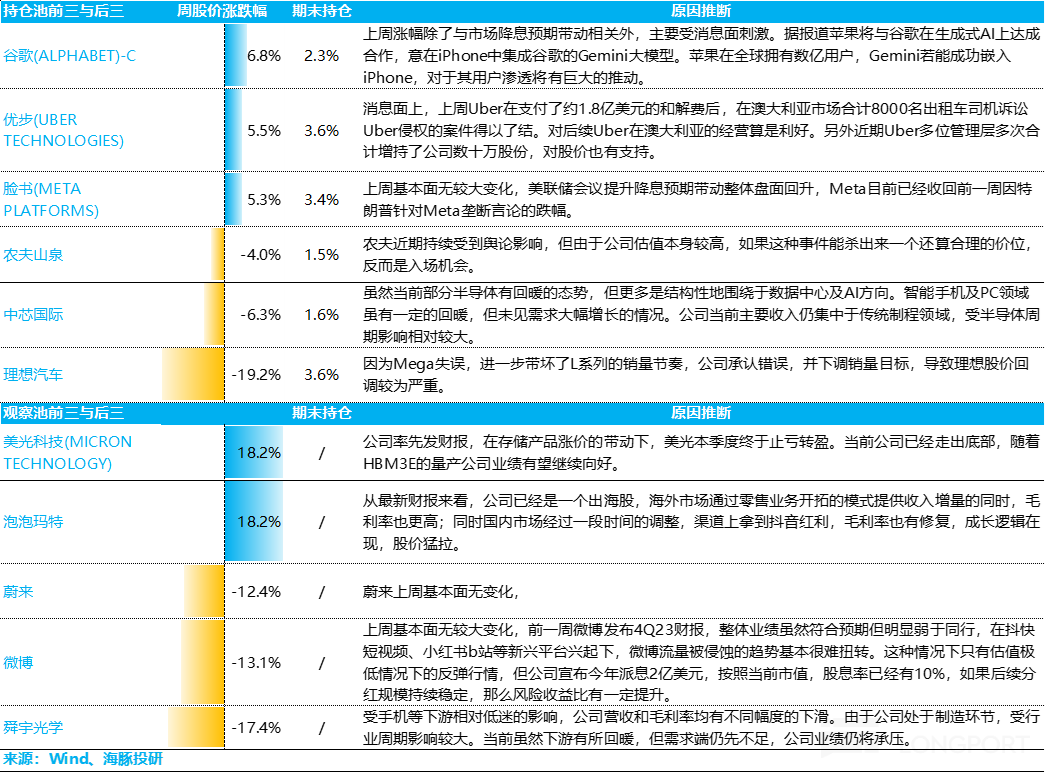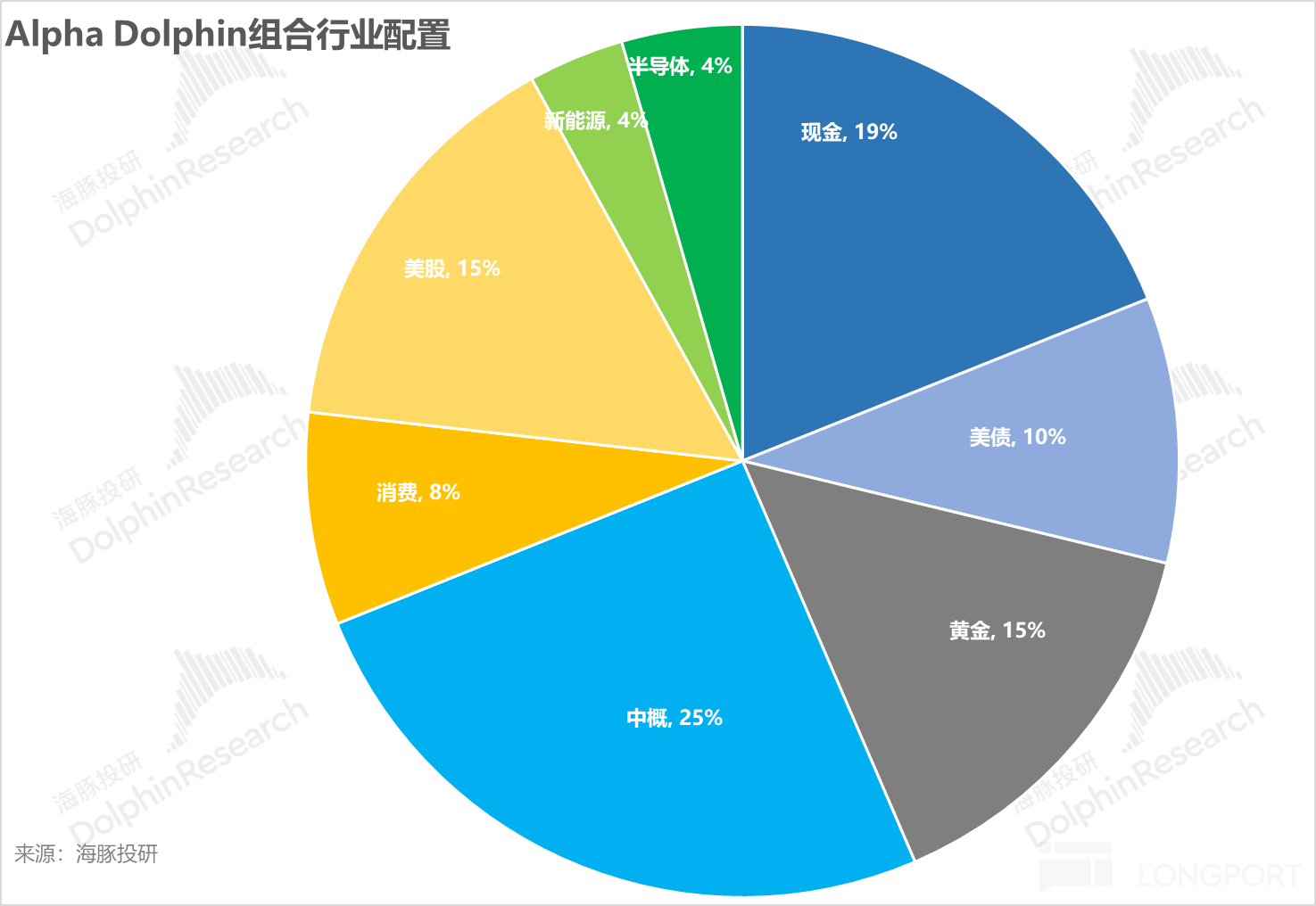
 Likes Received
Likes Received Posts
PostsHoping to re-enter U.S. stocks after a major adjustment? The likelihood is low.

Hello everyone, here is the core content of the weekly strategy report summarized by Dolphin Jun:
Under the pressure of high interest rates, both US real estate sales and development are on the rise. If the interest rates are cut three times in 2024 and the loan interest rates continue to decline, the scale of home sales is expected to further recover to above 2019 levels, and the decline in home prices should only be a matter of time. At this point, it can be reasonably speculated that the bottom adjustment of the US real estate market has basically come to an end.
Based on the latest economic forecasts from the Federal Reserve, the Fed's assessment of the next stage of the US economy is likely to be high growth, relatively high interest rates, and low unemployment rates, which may be very similar in form to the economic situation during the Clinton administration in the 1990s. The current economic trend indeed fits this trend.
With reliable fundamentals, Dolphin Jun believes that market liquidity should be monitored, but not overly emphasized, especially in the case of a strong economy and stock market. In addition to the excess liquidity reflected in the reverse repurchase balance, the Treasury Department and the Federal Reserve have room for cooperation to avoid liquidity shocks.
Overall, as the first quarter of 2024 comes to an end, the macro environment for US stocks is characterized by strong employment, a strong economy, high deficits, and continued loose liquidity. In this situation, although equity assets may be relatively overvalued, it is difficult to see a significant pullback. At most, after valuations have become high, they may be diluted by earnings releases.
Here are the detailed contents:
Last week, there was relatively little macro information in the US stock market, mainly focusing on the latest home sales data and the Federal Reserve's interest rate meeting in March. Both new home sales and housing starts data were high, and the outcome of the interest rate meeting is likely to indicate support for rate cuts under a strong economy this year, making it difficult for US stocks to see a significant pullback in the short term.
I. High Interest Rates Can't Suppress the Awakening of US Real Estate
While mortgage rates are still hovering between 6-7%, the seasonally adjusted annual sales volume of existing homes and new homes in the US in February has entered a positive growth state, whether on a month-on-month or year-on-year basis. Currently, US home sales have basically recovered to 90% of the levels in the same period in 2019 before the pandemic.
Looking at existing homes and new homes, new homes are seeing an increase in volume and a decrease in prices, especially with both year-on-year and month-on-month declines in new home prices, while existing home sales are seeing both volume and price increases, with a particularly large increase in the volume of existing home transactions in February.

Due to the strong performance of the real estate market, private residential construction continues to grow, and real estate development has advanced into an upward trend ahead of the rate cut cycle.

In this scenario, if there are three consecutive rate cuts in 2024 and the loan interest rates continue to decline, the scale of home sales is expected to further recover to above 2019 levels, and the decline in home prices should only be a matter of timeAt this point, it can be reasonably inferred that the bottom adjustment of the U.S. real estate market has basically come to an end.
II. March FOMC Meeting: Smooth Cycle Veteran
The March interest rate meeting concluded without surprises. The Federal Reserve kept the benchmark interest rate unchanged, maintained the expectation of three rate cuts this year, but raised the economic growth forecast for 2024, lowered the unemployment rate forecast for 2024, and raised the core PCE forecast for 2024.
It is clear that after three months, the members of the Federal Reserve are more confident in the U.S. economy. The current policy rate is too restrictive, and even if inflation rebounds after the year, the expectation of three rate cuts this year remains unchanged.
The main changes are in the expectations for 2025 and 2026: the growth forecast for GDP and the position of the policy rate have been raised, implying a judgment that:
Post-pandemic, the U.S. economy may be characterized by high growth, relatively high interest rates, and low unemployment rates, which may be very similar in form to the economic situation during the Clinton administration in the 1990s.

From the current trend of the economy, in the two core industries of real estate and automobiles, real estate is supported by low supply due to destocking over the past decade and strong purchasing power of residents, while high-end manufacturing (new energy vehicles, semiconductor chips) + infrastructure reconstruction, supported by Biden's three major bills under fiscal stimulus + AI new technologies, the current trend of the U.S. economy does tend towards a soft landing or non-landing path.
III. U.S. Stock Market Liquidity: Focus but not Overemphasize
In a situation with no fundamental worries, Dolphin believes that market liquidity should be a focus but should not be overemphasized. With the backdrop of asset inflation, the Federal Reserve and the Treasury have enough policy space to prevent liquidity risks.
Regarding the Fed's description of the pace of balance sheet reduction in this meeting:
a. Officially starting the preventive measures: "The members of the Federal Reserve discussed the issue of slowing down the pace of bond sales at the meeting, but no decision was made this time. The relatively unanimous idea is that slowing down fairly soon is appropriate, which is consistent with our previous plans. However, slowing down does not mean reducing the ultimate amount of balance sheet reduction, but rather extending the duration."
b. Asset structure optimization: MBS will not be reduced, mainly slowing down the pace of selling treasuries. The long-term goal is to concentrate the Fed's assets on treasuries, but in terms of the priority order of decisions, the judgment of the pace of selling bonds comes first, and structural optimization comes second.
Regarding the issue of reverse repo filling the liquidity gap, Powell's statement is:
a. Once the overnight reverse repo balance stabilizes, it could be zero or close to zero, then further contraction of the balance sheet should correspond to an equal contraction in bank reserve balances.
b. Currently, reserves are abundant or even excessive, and the goal is to reduce them to ample. Observing indicators such as various money market interest rates to prevent liquidity shocks similar to those in 2019 and 2020From the above description, we can see:
First, the next two FOMC meetings are scheduled for May and June. Assuming that the plan to slow down will be announced in May to give the market some buffer time, the plan to slow down the pace of balance sheet reduction should be implemented by mid-year.
Second, after the previous liquidity shock issue, it is clear that the current Fed has learned a lot. In terms of policy intent, it is cautious to prevent liquidity shock events. Compared to raising interest rates, there is a subjective intention to suppress stock market performance. The Fed undoubtedly creates liquidity shocks in the pace of balance sheet reduction to lower bond and stock market performance.
Of course, there is a voice in the market that the BTFP will mature in mid-March, and April will enter the tax season. At that time, market liquidity may be impacted, and at the same time, reverse repurchase agreements are being rapidly consumed, which will impact market liquidity.
However, from a fiscal perspective, the current focus is on high revenue and high expenditure. After personal income tax payments, the money flows into the TGA account, and before it gets hot, it has already been spent, quickly turning into physical work brought by proactive fiscal policies to support economic expansion. Moreover, with increased income, fiscal financing pressure is reduced. Ultimately, the so-called tax revenue absorbing liquidity is likely to be offset by the decrease in net financing amount by the Ministry of Finance.
Regarding reverse repurchase agreements, with the increase in the TGA account, the consumption rate has slowed down, and the current balance is $850 billion. Even if the subsequent BTFP maturity leads to monthly consumption increasing from $100-150 billion to $200 billion, pulling it to $200 billion monthly consumption from the $200 billion balance before the epidemic, there is still a consumption time of 3 months. Three months later, the Fed can use balance sheet reduction to catch up again.
From the situation in the past week, due to the reduction of $16.6 billion in loan balances in the first week after the BTFP maturity, it was basically offset by the previously released reverse repurchase balance, and overall liquidity from the Spring Festival to now is still marginally upward.
Overall, as the first quarter of 2024 is coming to an end, the macro environment in which the U.S. stock market is located is characterized by strong employment, strong economy, high deficits, and continued loose liquidity. In this situation, equity assets may have relatively high valuations, but it is difficult to see a significant pullback. At most, after valuations are high, waiting for earnings releases to dilute valuations.
IV. Portfolio Rebalancing and Returns
On March 22nd, the Alpha Dolphin virtual portfolio did not rebalance. At the end of the week, the portfolio's return slightly declined by 0.2%, weaker than the S&P 500 (+2.3%), but stronger than MSCI China (-0.7%), Hang Seng Tech Index (-2.6%), and MSCI China A (-1.3%)Portfolio Performance Analysis
Since the start of the testing of the portfolio until last weekend, the absolute return of the portfolio is 30%, with an excess return compared to MSCI China of 56%. From the perspective of asset net value, the initial virtual assets of Alpha Dolphin were $100 million, which has now risen to $133 million.
Stock Contribution to Profit and Loss
Last week, the stocks with the largest increase were still the US semiconductor stocks combined with the recovery of Chinese consumer assets. However, after liquidity flowed back to the US stocks, new energy stocks sensitive to liquidity, coupled with the large drop in the Chinese Yuan, led to a significant decline in Chinese concept small-cap stocks. Other stocks with significant declines mostly had poor performance.
Portfolio Asset Allocation
The Alpha Dolphin virtual portfolio holds a total of 20 individual stocks and equity ETFs, with 6 core holdings and the rest as underweight equity assets, with the remaining in gold, US bonds, and US dollar cash.
As of last weekend, the asset allocation and equity asset weightings of Alpha Dolphin are as follows:
Key Events This Week
This week marks the end of the Chinese concept internet companies' financial reports, with Chinese assets entering the earnings release period for traditional industries such as consumer goods and oil. Alpha Dolphin is focusing on the following stocks:
Disclaimer and Risk Disclosure for this Article:Please refer to the recent articles in the Dolphin Research Portfolio Weekly Report:
- "Is the low inflation in the United States still burning, can Chinese concepts still rise?"
- "Dare not chase after the seven tech sisters? Chinese concepts unexpectedly benefited"
- "Enterprises relay on residents to support the economy, the United States will not cut interest rates quickly"
- "The giants are stagnant, Chinese concepts are thriving, is it a last gasp or a style switch?"
- "In 2024, will the U.S. economy not land?"
- "At another critical moment! Will Powell bail out the spendthrift Yellen?"《Seeing the mud and sand falling again, how much faith can withstand the test?》
《The unstoppable deficit that supports the dignity of the US stock market》
《2024 United States: Good economy, quick rate cuts? Thinking too beautifully, will suffer losses》
《2023 United States: Rebirth in a suicidal manner》
《Fed makes a sharp turn, can Powell resist Yellen's pressure?》
《Year-end US stocks: Small gains are pleasing, big gains are harmful》
《Consumer cooling down, is the US Fed really just a "tough-mouthed" away from rate cuts?》《US stocks are overdrawn again, is it finally the turn for Chinese concept stocks?》
《The "Sun Never Sets" belief in US stocks is back, is it reliable this time?》
《High interest rates cannot extinguish consumption, is America really thriving or just a bubble?》
《The second half of the Fed's tightening, neither stocks nor bonds can escape!》
《The most down-to-earth, Dolphin Investment Portfolio is launched》
The copyright of this article belongs to the original author/organization.
The views expressed herein are solely those of the author and do not reflect the stance of the platform. The content is intended for investment reference purposes only and shall not be considered as investment advice. Please contact us if you have any questions or suggestions regarding the content services provided by the platform.

